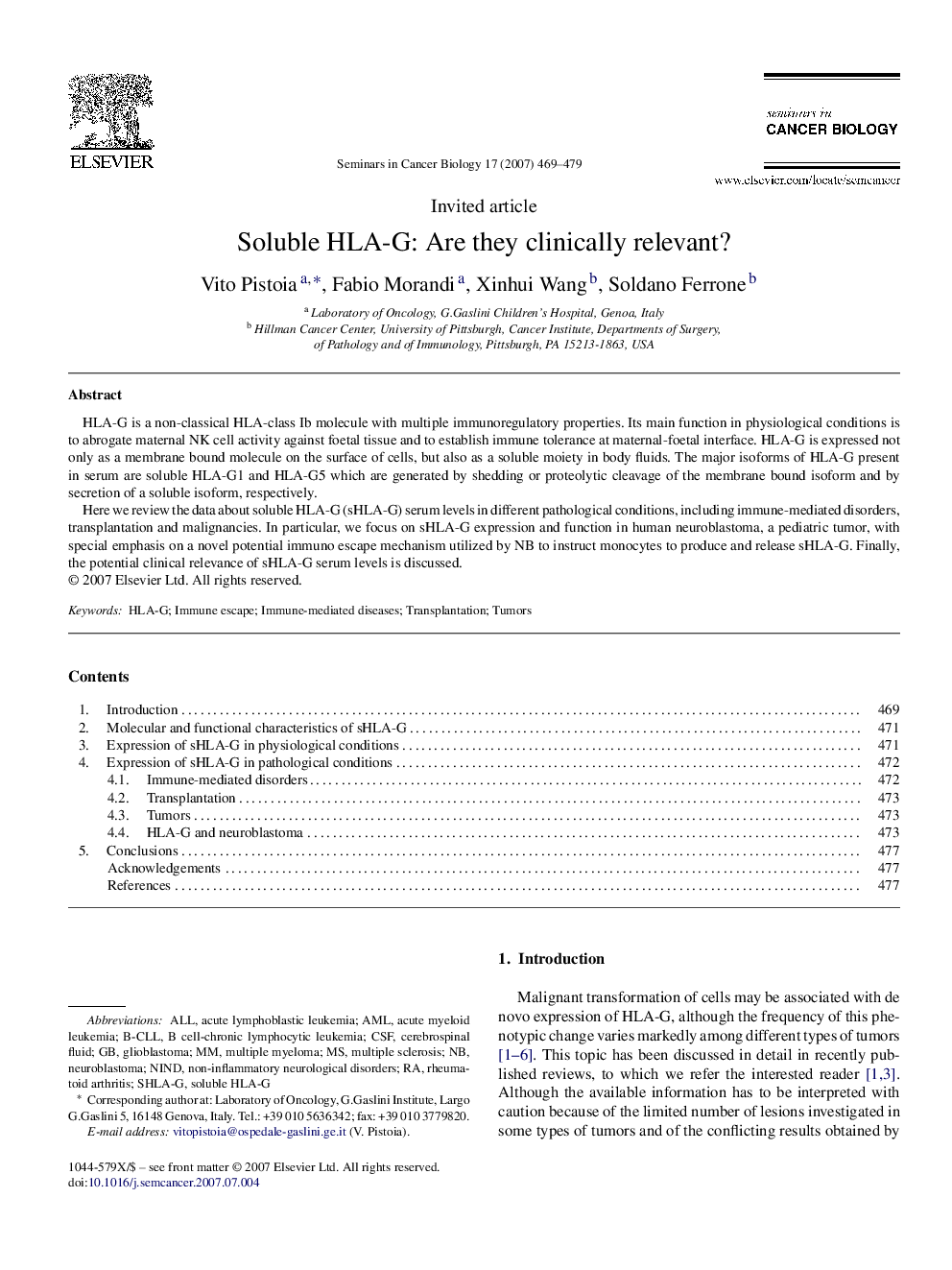| Article ID | Journal | Published Year | Pages | File Type |
|---|---|---|---|---|
| 2024209 | Seminars in Cancer Biology | 2007 | 11 Pages |
HLA-G is a non-classical HLA-class Ib molecule with multiple immunoregulatory properties. Its main function in physiological conditions is to abrogate maternal NK cell activity against foetal tissue and to establish immune tolerance at maternal-foetal interface. HLA-G is expressed not only as a membrane bound molecule on the surface of cells, but also as a soluble moiety in body fluids. The major isoforms of HLA-G present in serum are soluble HLA-G1 and HLA-G5 which are generated by shedding or proteolytic cleavage of the membrane bound isoform and by secretion of a soluble isoform, respectively.Here we review the data about soluble HLA-G (sHLA-G) serum levels in different pathological conditions, including immune-mediated disorders, transplantation and malignancies. In particular, we focus on sHLA-G expression and function in human neuroblastoma, a pediatric tumor, with special emphasis on a novel potential immuno escape mechanism utilized by NB to instruct monocytes to produce and release sHLA-G. Finally, the potential clinical relevance of sHLA-G serum levels is discussed.
